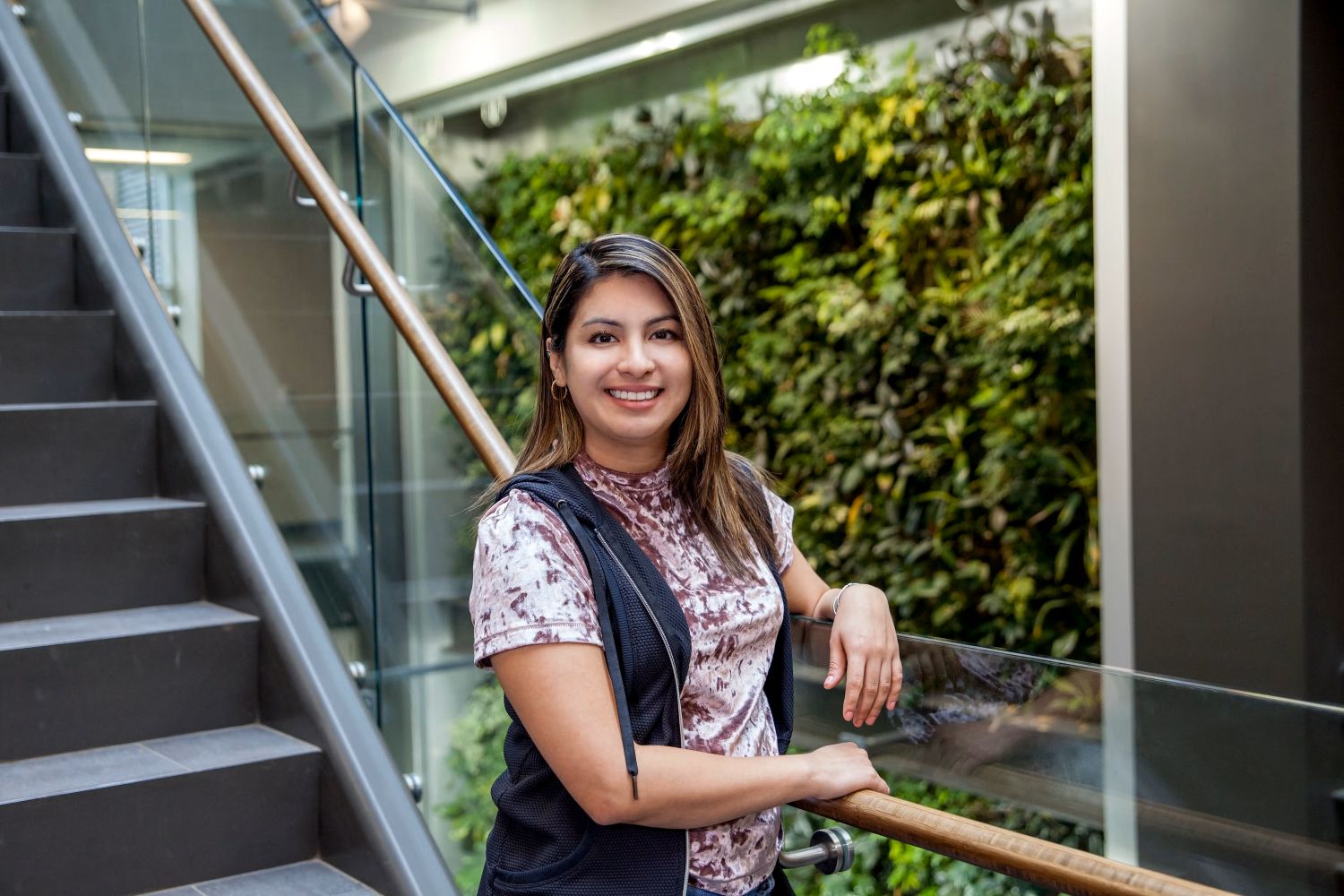Written by special contributor
In high school Andrea was computer savvy, artistic, and analytical. She wanted to find a university program that would allow her to be all of those at the same time.
Waterloo had always been a top choice for Andrea. She knew of its reputation and loved the idea of co-op.
With a little help from her mom, Andrea found Geomatics in the Faculty of Environment.
“I loved it!” says Andrea. “It really captured everything I’m interested in.”
An emerging field
Geomatics at Waterloo gives students a foundation in computer programming and statistics, as well as environmental analysis. And because it is still an emerging field, it offers plenty of opportunity to chart new territory.
“My advice for geomatics students,” says Andrea, “is to carve your own path, or pioneer initiatives that have never have been done before.”
Carving her own path is exactly what Andrea did. After her undergraduate degree, she continued to pursue her passion for geomatics in graduate studies. Andrea’s master’s project looked at coastal flooding in Nova Scotia from a climate change and policy adaptation point of view.
Using an online mapping and visualization tool she created, Andrea was able to show how new and increased flooding would prevent emergency respondents from helping citizens.
Municipalities then used Andrea’s data to put preventative measures in place (e.g., adding flood barriers) and to alter emergency plans.
Presently, Andrea continues to help communities — and Canada — become more aware of risks relating to natural disasters in her current career as a Geographic Information Systems (GIS) Specialist on the catastrophe risk team with the Insurance Bureau of Canada (IBC).

An interdisciplinary field
Andrea also recommends that geomatics students expand their knowledge in areas that are complementary, like environmental science, community planning, or business, as a variety of perspectives are needed in the field.
“I do a lot of spatial analysis and computer mapping,” she explains. “Through my co-op jobs in undergrad, I also gained experience in public policy. Now, I combine my technical, environmental and public policy knowledge to help inform communities about ways to decrease risks.”
Her advice to those considering Geomatics? "If you are interested in how technology intersects with nature and society, Geomatics is definitely a path worth pursuing. Just be ready to learn and to learn fast: available technologies are always changing — it’s exciting!"

Above: A map Andrea created illustrating how respondents from 76 countries answered the question, "How concerned are you about the impacts of climate change?" as part of a global public consultation event on climate and energy issues.
A creative field
In her position at IBC, Andrea coordinates the collection of vast amounts of data and figures out how to transform raw data into information IBC uses to encourage governments to reduce risks relating to natural disasters.
Figuring out what data to gather, where to get it from, how to analyze it and — most importantly — how to present it can be extremely creative.
“You’re forced to think about how someone might use the information,” notes Andrea. “But the way you present the information — like using visualization techniques — can be very important in having people participate.”
What’s next for Andrea
Recently, Andrea authored a paper on flood-risk management that was accepted for publication by The Canadian Water Resources Journal.
In addition to her work at IBC, Andrea is also a part-time researcher at Waterloo. She works with Assistant Professor Jason Thistlethwaite to create materials and information to help influence public policy, and create communities more resilient to extreme weather.
"Be ready to learn and to learn fast: available technologies are always changing — it’s exciting!"
Related articles

Finding your place – and making the world a better one

C-suite sustainability
As a kid growing up around the oil industry, Okeoghene witnessed first-hand the intrinsic relationship between business and the environment. Creating a sustainable future, she quickly discovered, is as much about protecting our natural resources as it is fostering a competitive business landscape.

A map to your future: Geomatics at Waterloo
When you check the weather report, tag your location on Instagram, or use an app like Waze to guide you to a restaurant, you’re using geospatial information. That’s information based on where you are, what’s going on in the environment, and what the geography is like around you.

